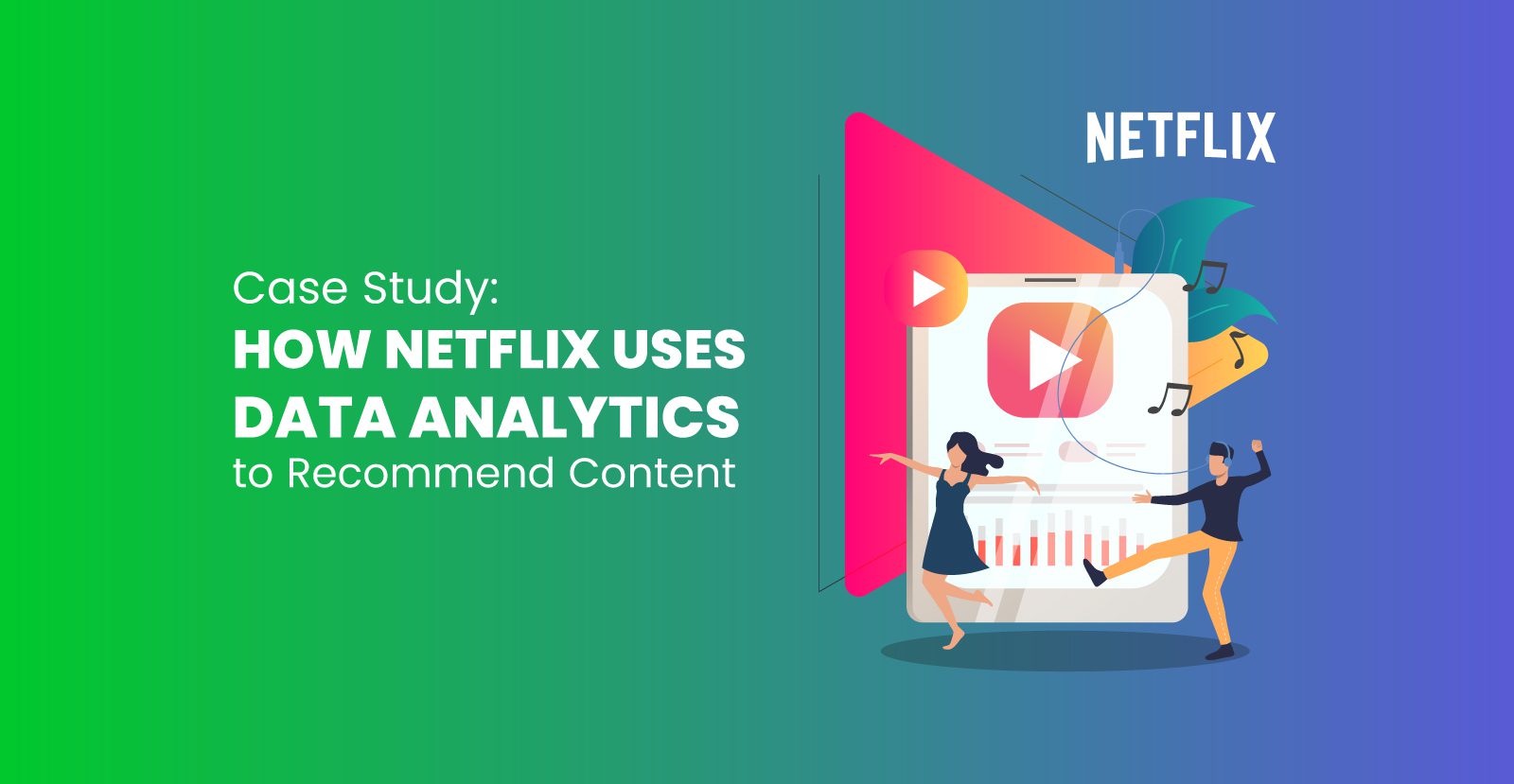Imagine settling onto your couch after a long day, remote in hand, ready to embark on a cinematic journey. You open Netflix, and there it is – a tailored list of recommendations that seem to understand your every viewing whim. Have you ever wondered how Netflix manages to recommend the perfect content just for you? The answer lies in the fascinating world of data analytics and the incredible power it holds in transforming our entertainment experience.
In this data-driven age, companies like Netflix have harnessed the magic of data analytics to not only keep us glued to our screens but also to enhance our satisfaction. In this blog, we’ll dive deep into the case study of how Netflix employs data science to recommend content, and we’ll unravel the secrets behind the algorithms that make it all possible. So, grab your popcorn, because we’re about to take you on a journey behind the scenes of your favorite streaming service.
The Netflix Data Analytics Revolution
Netflix’s journey into the realm of data analytics began over a decade ago when they transitioned from a DVD rental service to a streaming giant. They realized that to stay competitive and keep their subscribers engaged, they needed to offer more than just an extensive library of content. They needed to provide a personalized and immersive viewing experience.
The Netflix Case Study in Data Science
At the heart of Netflix’s recommendation system lies a complex web of algorithms and data points. One of the foundational algorithms Netflix employs is collaborative filtering. This technique, which is a cornerstone of recommendation systems, analyzes user behavior and preferences to predict what content you might enjoy based on what similar users have liked. It’s like having a team of movie enthusiasts who understand your taste and recommend films they know you’ll love.
Here’s how it works: Netflix collects data on what you watch, how long you watch, and when you watch. They also gather information about your interactions with the platform, such as searches and ratings. All of this data is then fed into their recommendation engine, which processes it to generate personalized suggestions. But Netflix’s data analytics prowess goes beyond collaborative filtering.
The Power of Netflix’s Data Analytics Stack
Netflix leverages a sophisticated technology stack to enhance its recommendation system. One key component is the use of neural networks and deep learning. These advanced techniques allow Netflix to analyze intricate patterns in user behavior and content, making recommendations even more accurate.
Another crucial aspect is the use of Natural Language Processing (NLP). By analyzing the plot summaries, reviews, and even subtitles of the content, Netflix gains a deeper understanding of the content itself. This enables them to make recommendations not only based on genre or actor but also on the thematic elements and moods of the content.
Moreover, Netflix employs reinforcement learning, a branch of machine learning where the system learns by trial and error. When you see a recommended show and decide to watch it, or if you choose to ignore it, Netflix’s algorithms take note and adjust their recommendations accordingly. This constant feedback loop refines the recommendations over time, ensuring they stay relevant to your evolving tastes.
The Netflix User Interface: Where Data Meets Design
It’s not just about the algorithms; Netflix’s user interface plays a vital role in delivering a seamless and enjoyable experience. The recommendations are prominently featured on the platform’s homepage, making it easy for users to discover new content effortlessly. They also use compelling visuals and trailers to capture your attention and entice you to click play.
Netflix’s Global Reach and Localization
One of the remarkable aspects of Netflix’s data analytics strategy is its global reach. Operating in nearly every country, Netflix tailors its recommendations not only to individual tastes but also to local preferences. They analyze cultural nuances, viewing habits, and even regional holidays to offer content that resonates with diverse audiences worldwide.
The Future of Netflix’s Data Analytics
Netflix’s commitment to data analytics is unwavering, and they continue to invest heavily in research and development. They are exploring areas such as content creation recommendations, personalizing the artwork for content, and experimenting with interactive storytelling. With each advancement, Netflix aims to make your viewing experience even more engaging and tailored to your unique preferences.
Conclusion: A Data-Driven Entertainment Revolution
As we wrap up our case study in data science, it’s evident that Netflix’s use of data analytics has transformed the way we consume entertainment. By delving deep into user behavior and content analysis, Netflix has set the gold standard for personalized recommendations. It’s not just about suggesting what to watch; it’s about curating an experience that keeps us coming back for more.
So, the next time you open Netflix and see those spot-on recommendations, know that it’s not magic—it’s the result of cutting-edge data analytics and a commitment to understanding your viewing preferences. Netflix’s case study in data science serves as a testament to the immense power of data in shaping the future of entertainment.




Please enter input field